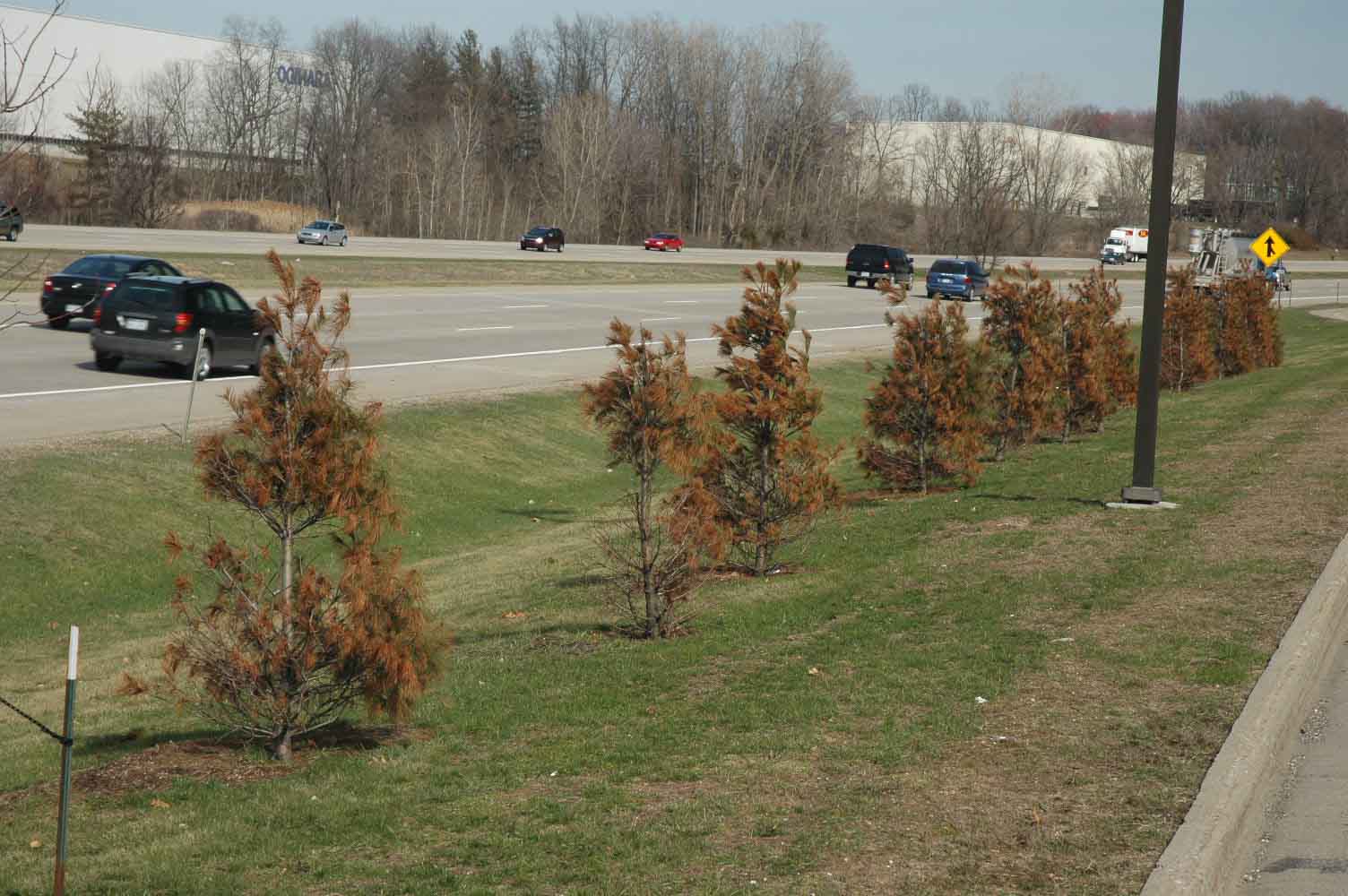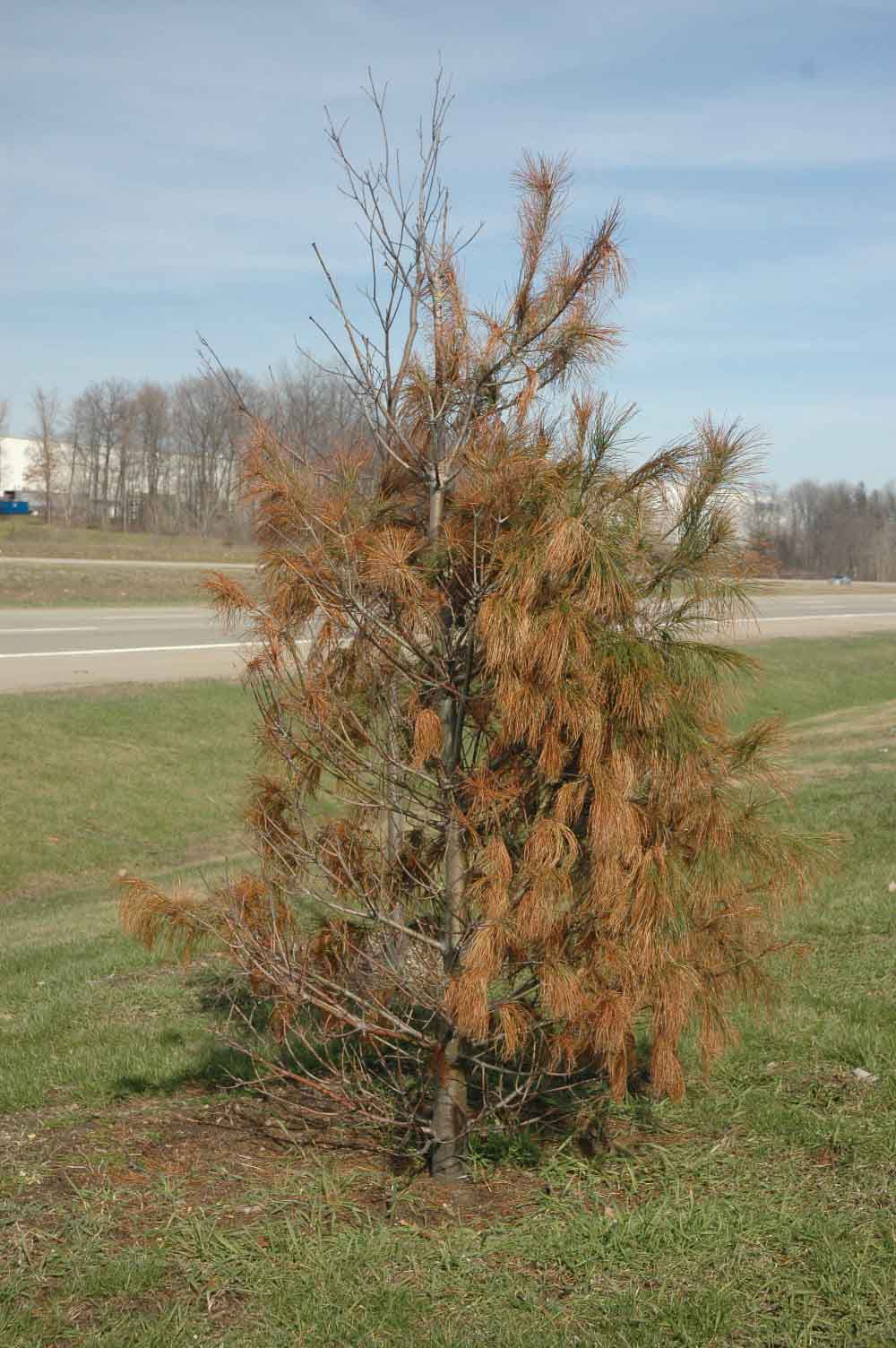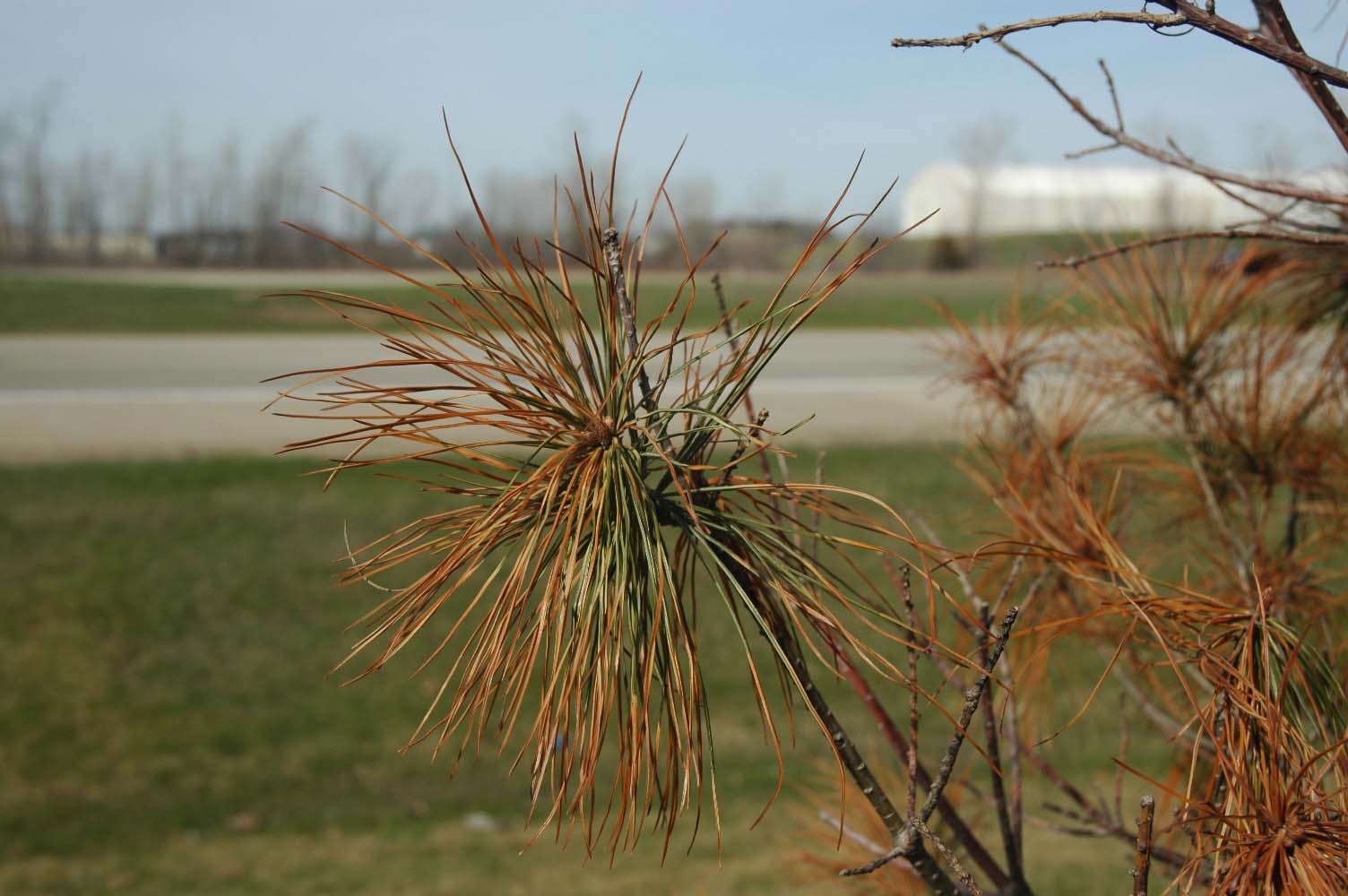Hopefully everyone got their filling of turkey and dressing over the long Thanksgiving weekend. I used our unusually mild weather on Saturday to celebrate a time-honored tradition around the Cregg farm: The annual cursing of the tangled Christmas lights.
Turning the calendar over to December in Michigan means another Midwest tradition is just around the corner as well: The annual dumping of the road salt. Although totals vary, at least one source estimates that road crews pour 8 million tons of salt on roads in the US each year. The effects of this sodium chloride are readily apparent on our vehicles – in Michigan it’s rare to see a vehicle more than 10 years old on the road – and drivers of those older cars that remain can usually see the road pass under them through a rusted-out floorboard. Of course all this road salt has profound implications for landscape plants as well. Sodium chloride can damage plants in several ways. Both sodium and chloride can cause direct toxicity, particularly from salt-laden spray drift from highways. Salt in soils can cause osmotic stress resulting in drought injury. Sodium in soils can displace potassium, magnesium, and other essential plant elements. High levels of chloride in plant tissue can reduce cold hardiness and make plants more susceptible to freezing injury. Suffice to say that salt is bad for plants.
So what’s a plant lover to do? In general I advise a two-phase strategy of Selection and Protection for homeowners and landscapers that have to deal with heavily salted roads. By Selection I am referring to planting salt tolerant plants (or at least avoiding salt sensitive ones). The poster child for a poor choice in Michigan is eastern white pine, which is extremely intolerant of road salt. Witness this planting at a rest area along I-96 between Lansing and Detroit.



Don’t you love to see your tax dollars at work? Even a cursory look at a list of salt sensitive plants would have been a tip-off that that white pines and highways are a bad mix. Most blog readers should be able to come up with a list of salt tolerant or salt sensitive plants for their area by Googling their way around the internet. A couple caveats about these lists: First, many are based on anecdotal experience, not hard data, so you may see inconsistencies between lists. If possible, try to consult several sources and look for a consensus opinion about the plants you’re interested in. Second, many recommendations are dated and include plants that may be considered invasive or no longer recommended for planting. One list I just looked at included Russian olive (invasive) and green ash (no longer planted in the Midwest due to Emerald ash borer).
Another approach to reducing salt damage to plants is Protection. Here I am referring to erecting a physical barrier to block salt spray or salt splash from reaching plants. The most typical form of barrier around here is a wooden frame or fence covered with burlap or canvas. Some people will actually wrap their evergreen trees or shrubs with burlap. This may help against winter desiccation but does little for salt since the salt-saturated burlap will still be in contact with the foliage. Obviously aesthetics go out the window with the protection approach but I’m noticing more and more people are willing to put up with a couple of months of looking at burlap to keep their plants looking thrifty the rest of the year. In northern Europe some road systems will line their roads with pre-formed plastic barriers to reduce salt splash to adjacent vegetation.
What about alternative deicers? This is a question I get frequently when I speak about salt and plants. There are several things to consider about alternative (i.e., not sodium chloride) deicers. First is the cost. All alternative deicers are more expensive than salt, some by a factor of 10 times or more. This often limits their widespread use for highway departments. Many road crews will use alternative products around bridges and other sensitive areas where they want to limit corrosive damage. Alternative products may also be useful for smaller scale operations such as parking lots and walkways. Secondly, many alternative deicers contain calcium and/or magnesium chloride. These may even be marketed as ‘plant safe’ since they contain calcium and magnesium, which are essential plant elements. The problem is the chloride. Chloride is a plant nutrient but is only needed in minute amounts (a few parts per million). At higher levels it becomes toxic.
A study in Colorado found tree damage due to chloride near roads which were treated with calcium and magnesium chloride for dust abatement. For safer alternative deicers consider chloride-free products such as calcium magnesium acetate.
In the meantime here’s hoping for a mild winter for everyone.
Interesting post, Bert! Takes me back to my Buffalo days. I had a graduate student some years back research some alternative deicers and their effect on an endangered plant population (which was downhill of a mountain road and got tons of deicer runoff). I need to get that thing published some day…
Interesting post, Bert! Takes me back to my Buffalo days. I had a graduate student some years back research some alternative deicers and their effect on an endangered plant population (which was downhill of a mountain road and got tons of deicer runoff). I need to get that thing published some day…
What kind of alternatives did your student look at? I get a lot of questions on these. My usual repsone is, ‘if has a chloride salt as a main ingredient, it’s probably no better or worse than rock salt’.
They were potassium acetate and calcium chloride based. If you’d like to read the report we sent to WSDOT, it’s at this link: http://www.wsdot.wa.gov/Research/Reports/500/582.1.htm.
What kind of alternatives did your student look at? I get a lot of questions on these. My usual repsone is, 'if has a chloride salt as a main ingredient, it's probably no better or worse than rock salt'.
They were potassium acetate and calcium chloride based. If you'd like to read the report we sent to WSDOT, it's at this link: http://www.wsdot.wa.gov/Research/Reports/500/582.1.htm.